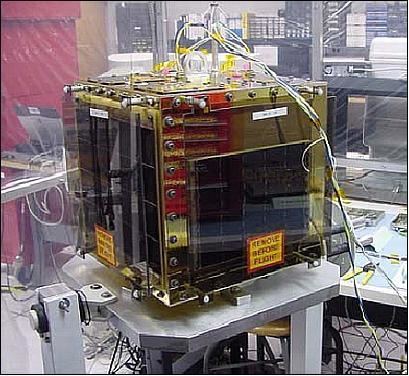Mission type Plasma research Mission duration Failed to orbit Inclination 39° Launch date 24 March 2006 | Operator USAF Academy Launch mass 19.5 kg | |
 | ||
Manufacturer Surrey Satellite Technology Similar Ratsat, SpaceX COTS Demo Fli, Innovative Space‑based Radar An, RazakSAT, Dragon Spacecraft Qualificati | ||
FalconSAT-2 was a satellite built by students of the United States Air Force Academy as part of the FalconSAT programme. It was intended to have been placed into low Earth orbit to study the effects of plasma on communications with spacecraft, however it failed to reach orbit due to a malfunction of its carrier rocket.
The FalconSAT-2 programme started in late 2000, as a followup to FalconSAT-1. The spacecraft was based on a bus constructed by Surrey Satellite Technology Ltd, with the experiments being constructed at the USAF Academy. The primary instrument aboard FalconSAT-2 was the Miniaturized Electrostatic Analyzer, or MESA. It was originally scheduled to be deployed from Space Shuttle Atlantis, on mission STS-114 in early 2003. Following the Columbia accident this mission was delayed, and FalconSAT-2 was removed from the Shuttle manifest.
It was then assigned as the payload for the maiden flight of the SpaceX Falcon 1 carrier rocket, which was launched from Omelek Island at 22:30 GMT on 24 March 2006. At launch, a corroded nut caused an engine fire, leading to the failure of the engine twenty five seconds into the flight. The rocket fell into the Pacific Ocean close to the launch site. FalconSAT-2 was thrown clear of the rocket, and landed in a storage shed on Omelek Island, just few feet to its own shipping container.
